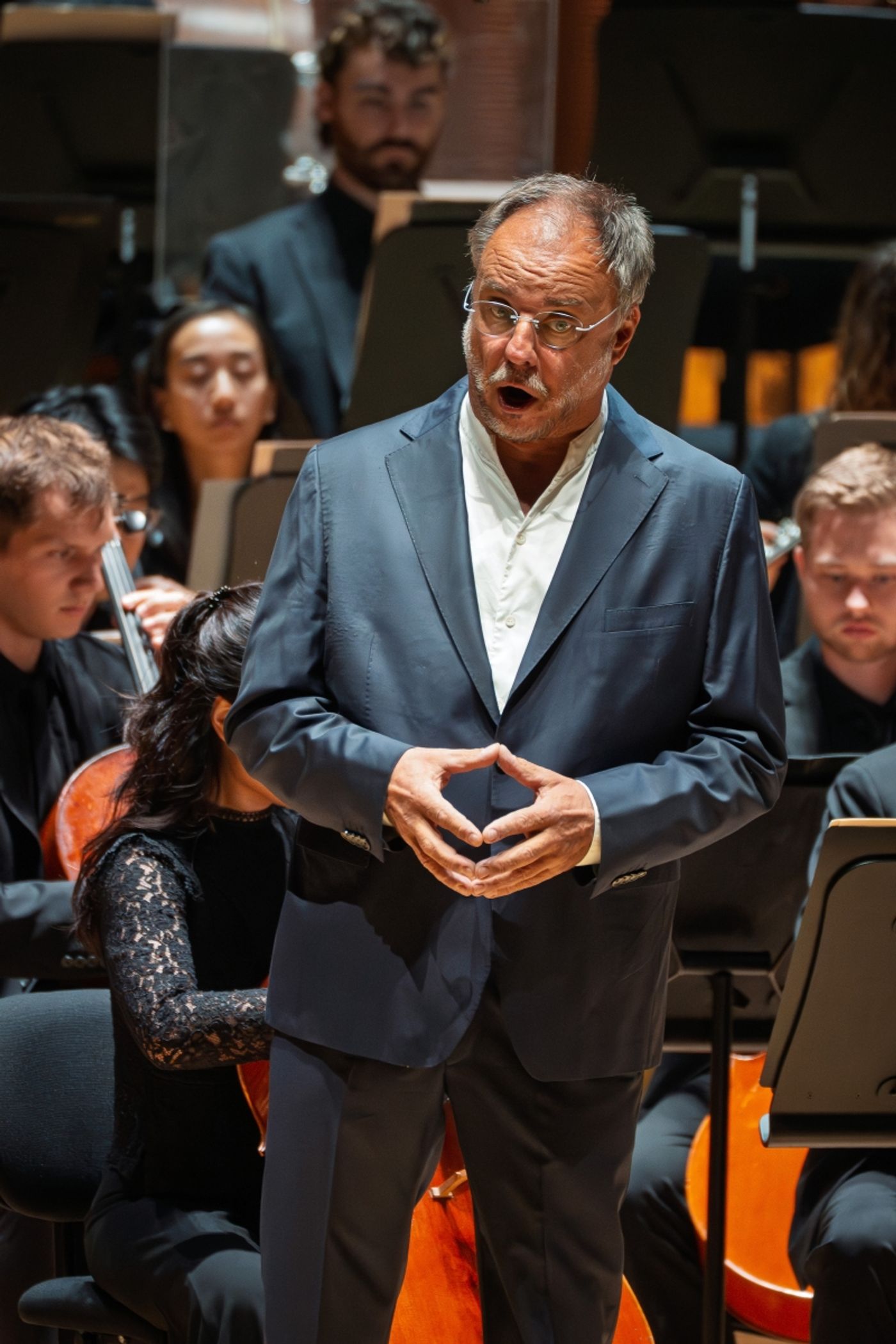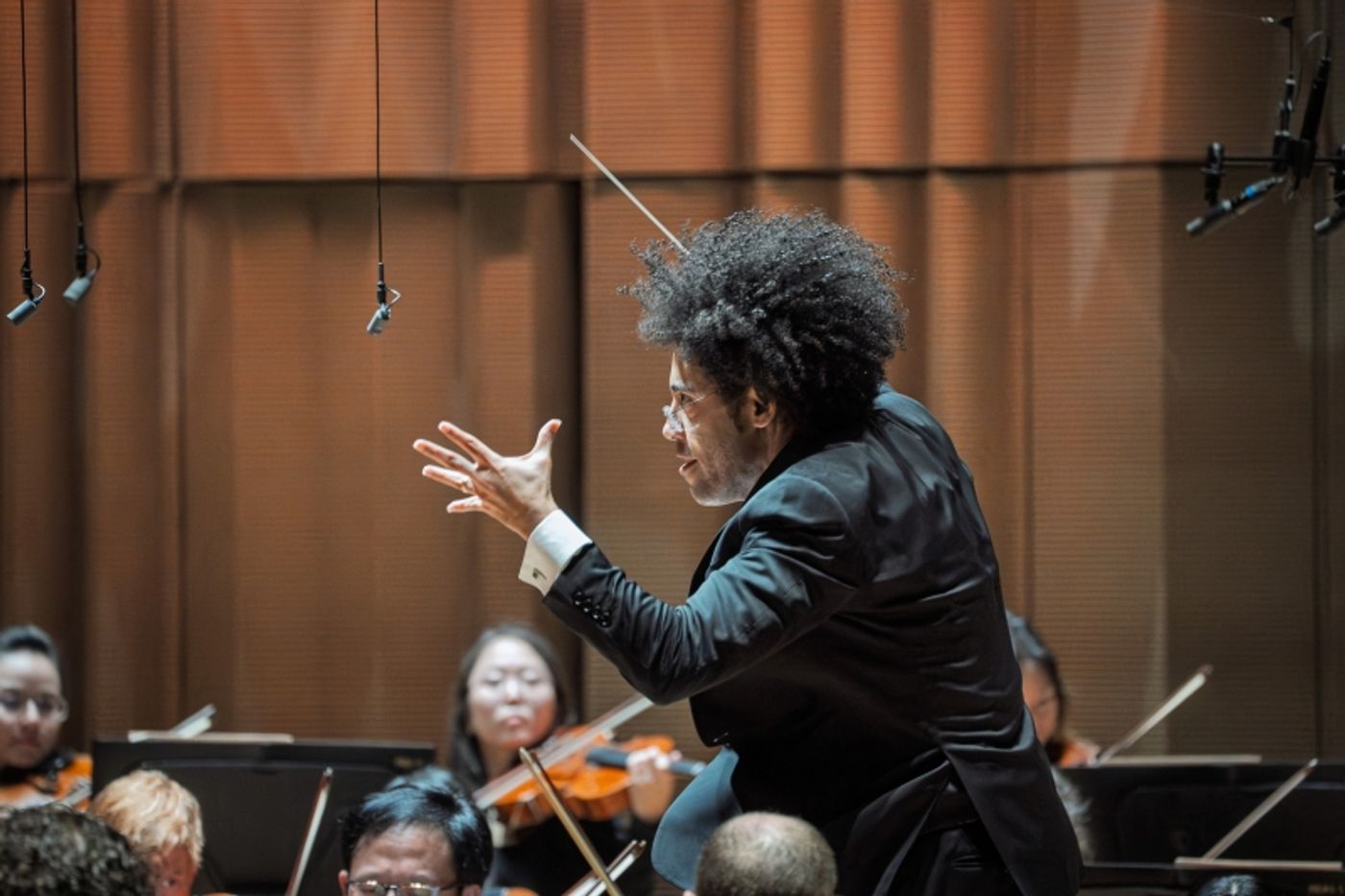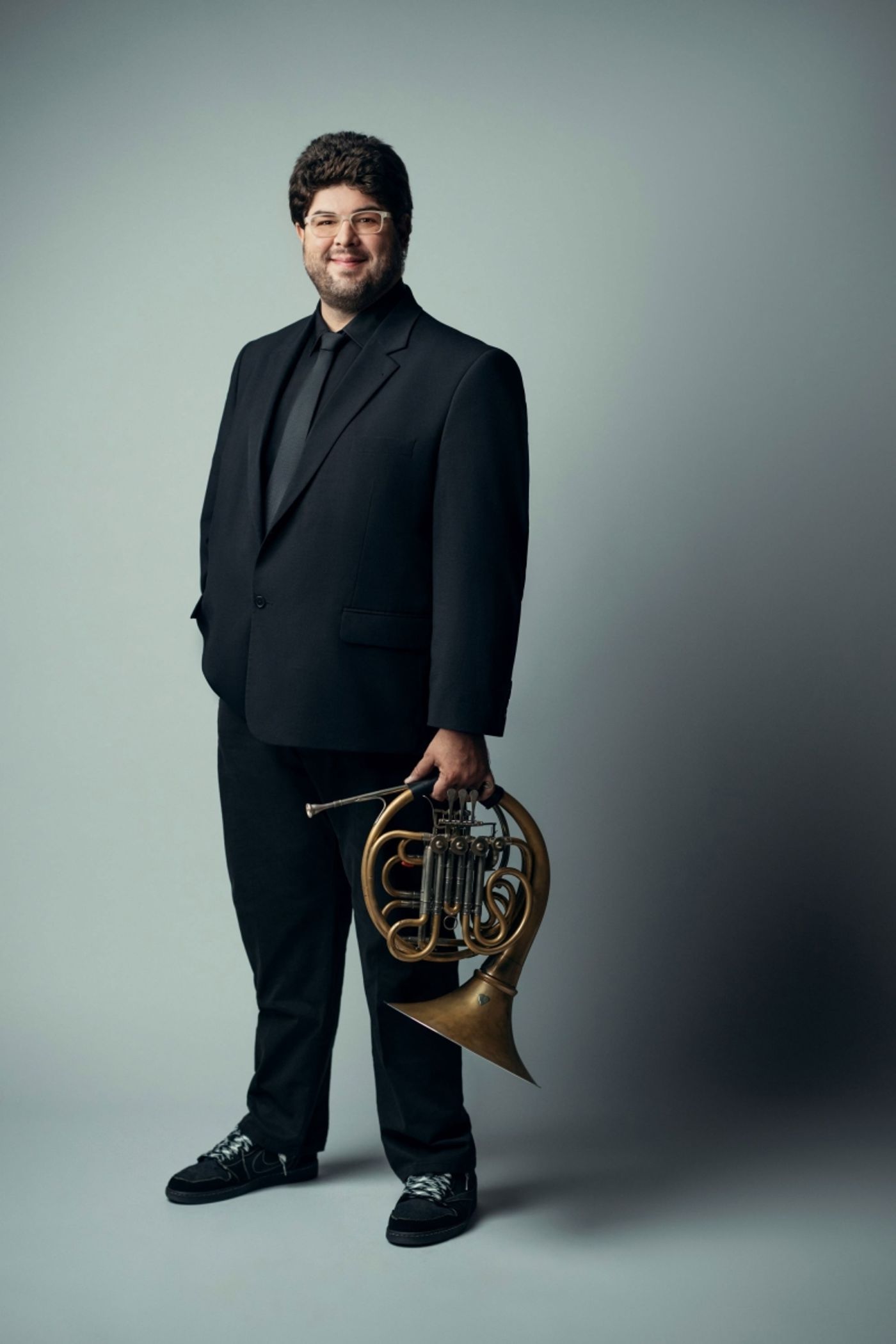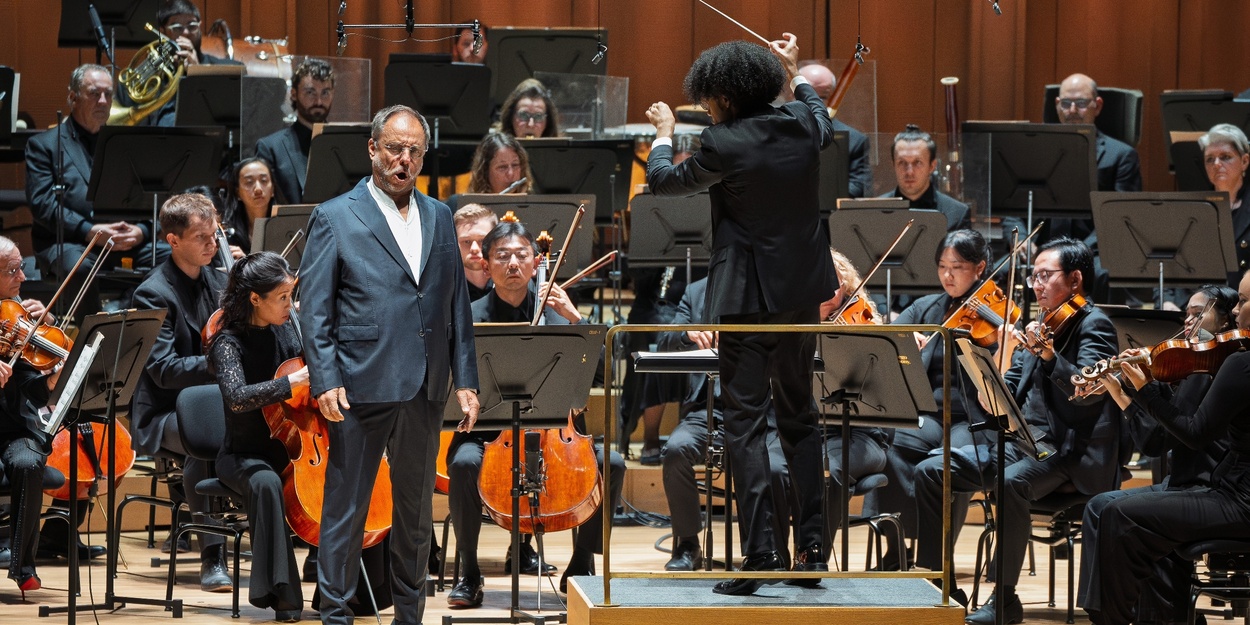Des Knaben Wunderhorn is a collection of more than 700 German folk poems and songs compiled in the early 19th Century. Several notable composers, including Schubert, Mendelssohn, Schumann, and Brahms, wrote songs based on texts in the collection. Mahler based roughly two dozen of his songs on them and added orchestration to half of those.
San Diego Symphony Orchestra Director and Conductor Rafael Payare and guest baritone Matthias Goerne selected six to perform in a program titled “Where the Shining Trumpets Blow,” which is also the name of one of the songs Goerne sang.
Following intermission, those shining trumpets, along with equally boisterous French horns, and trombones, got above and beyond serious in Bruckner’s 4th symphony, the “Romantic.”
Des Knaben Wunderhorn (The Boy’s Magical Horn)
Matthias Goerne has had such a spectacular and varied career that its summary takes up an entire densely worded two-column page in the concert’s program magazine. He’s toured in recitals with well-known pianists and with symphony orchestras, sung major roles at the MET and other top companies around the world, and made numerous recordings, garnering five Grammy nominations along the way.
Nearer the end of his career than its beginning, he’s concentrated on the songs (lieder) of Schubert and other paragons of the genre. Winterreise (Winter Journey) by Schubert is the most often performed and recorded collection of lieder because of the variety and depth of its emotional expression. Goerne’s ability to evoke such emotion was a key to a satisfying experience on this evening.

Baritone Matthias Goerne
The first song in the concert’s set was Rheinlegendchen (“Little Rhine Legend,” which suggests the plot of Wagner’s opera Das Rheingold). The balance between orchestra and singer worked to the advantage of both except for a brief moment or two when Goerne was barely audible even though Payare had the orchestra at an appropriate pianissimo.
Goerne’s movements reinforce the emotion of his singing, but I found them at times overdone. He swayed with wide arm motions and seemed a bit like an accountant in a relatively casual-looking outfit. A pair of glasses that are never part of his publicity shots added to the effect.
But close your eyes, and age has made little difference in his voice, a little deeper and huskier, but still with thrilling power at its loudest and tender flexibility at its softest.
As for the songs, a rather weird bunch, but entirely representative of the stories Mahler chose to orchestrate. “Revelge” (Reveille) is a macabre march of dead soldiers returning as skeletons, passing a left-behind dead drummer who pleads with them as they pass. The strings play col legno (the wood part of the bow hitting the string) to suggest the clacking of bones.
“Wo die schönen Trompeten blasen” (Where the splendid trumpets sound) tells of a soldier speaking to a woman as he’s about to go to war. A distant fanfare sounds ominously in the background and foretells the last line, “Where there the fair trumpets sound, there is my home, my house of green grass!”
Anton Bruckner’s Symphony No. 4, the “Romantic”
Mahler and Bruckner were friends who respected each other as composers, and both wrote unusually long symphonies in the style of the late romantics. When I was younger, I spent a lot more time listening to Mahler than Bruckner. My listening gradually switched the other way as I got older. Mahler has the self-centered strong emotions of youth, and his music is often related to what has happened in his life.

Conductor Rafael Payare
Bruckner, a deeply religious man, is constantly searching to express something beyond himself, and I don’t think he was ever entirely satisfied that he’d succeeded. Few if any composers have spent more time revising their major works.
When recording or including one of his symphonies in a concert, the first decision that must be made is which edition to use. Bruckner was responsible for four revised versions. Payare chose instead a composite version compiled by Leopold Nowak, the version most often performed. Bruckner’s versions are rarely used because of unresolved questions related to changes in the composer’s orchestration made during the process of publishing performance scores.
In any version, the French horn plays an essential role. It introduces the opening four-note theme and other themes throughout the work’s four movements, often providing an obbligato behind the mainline when not out front. Principal French horn Benjamin Jabar was impressive during an endurance test of a little over an hour filled with solo entries, duets that range from a delicate partnership with a flute to a challenge from one of those shining trumpets.

Principle French Horn Benjamin Jabar (Credit San Diego Symphony Orchestra)
Payare’s tempos were a bit faster than that of most conductors, emphasizing the symphony’s bright optimism and adding to the building excitement of its many fortissimo climaxes. As assertive and dominant as the brass section was, Payare and the hall’s terrific acoustics meant the sound of each section was clear in even the loudest passages.
The final climax features a return of the opening four note theme, this time in a triumphant conclusion with full brass that brought a roaring audience to its feet for three curtain calls. When Benjamin Jabar was the first Payare motioned to stand, the roar reached its peak.
Photo credit Gary Payne when not otherwise shown.
San Diego Symphony 2025-26 Season Information here.
Reader Reviews
To post a comment, you must register and login.
